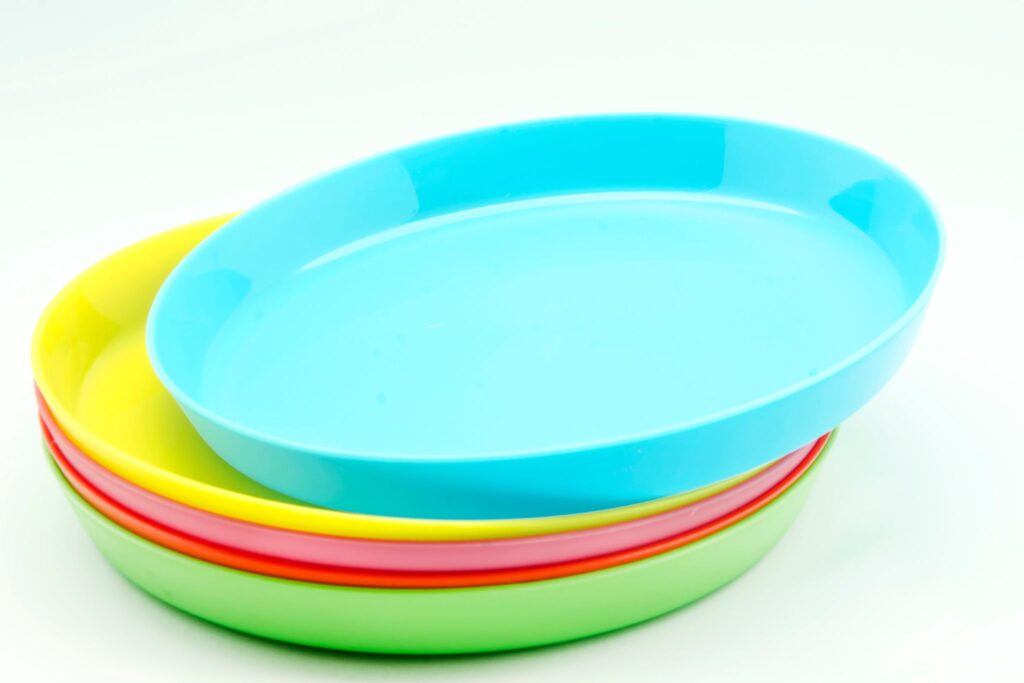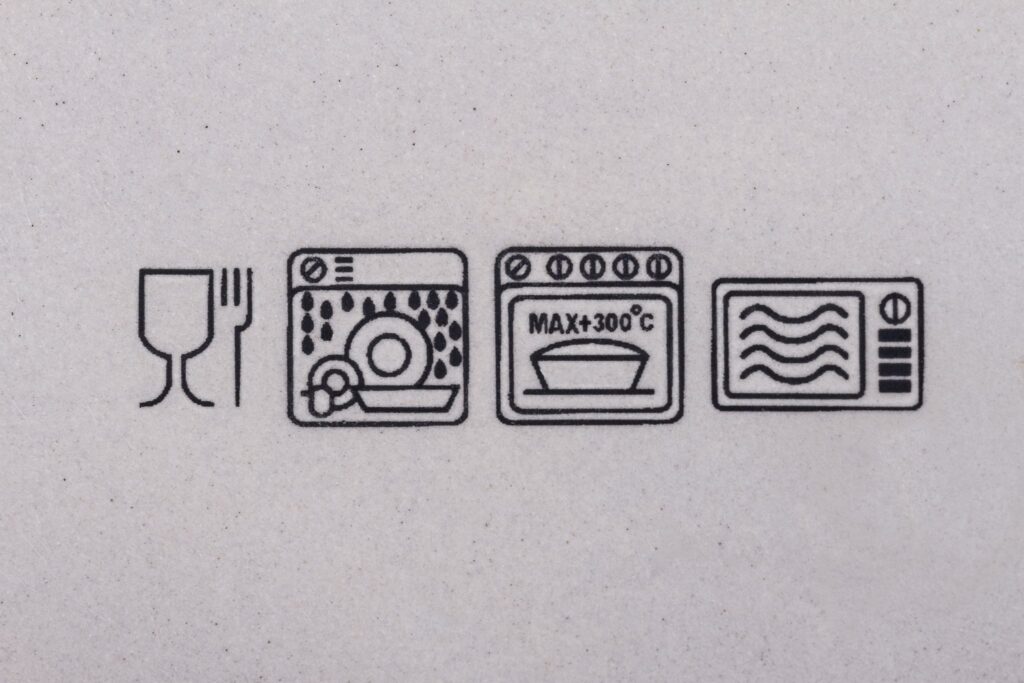Originally Created on: May 18, 2023 @ 10:16 am
Can you put a plastic plate in the microwave? Using a microwave to heat food or beverages is one of the fastest ways of cooking.
This is because all you have to do is put the food in a microwave, and the appliance will do the work for you. However, with convenience comes a problem that many people have been debating for years – can you put a plastic plate in the microwave?
Plastic is a popular material for making household goods such as food containers, plates, and other dishes. However, not all plastic plates or food containers are suitable for use in a microwave.
Want to know if you can put a plastic plate in the microwave? Keep reading!
Also Read: Can You Microwave Wood Bowls? [What No One TELLS You]
Table of Content
Can You Put a Plastic Plate in the Microwave?
Plastic is a synthetic material that’s flexible and lightweight. Thanks to these properties, plastic is commonly used in the making of different products. That includes household goods, medical devices, and automotive parts.
While plastic is durable, it’s highly advisable to avoid putting plastic plates in the microwave. However, it depends on the type of microwave and the plastic plates in use.
If you use a conventional microwave to heat food, then putting plastic plates will cause burning. This is because the microwave uses electromagnetic waves to heat the food.
If you have a convection microwave, then putting plastic plates in them is safer. This is because convection microwaves use hot air for heating and cooking food. If you have to use plastic plates, look for those labeled as microwave-safe.
You May Also Like: Can You Put Tervis In The Microwave? [The TRUTH + 3 TIPS]
To know if your plastic plates are microwave safe, we recommend checking on the packaging. If the plates are microwave safe, then they can withstand temperatures up to 300 degrees Celsius (570 degrees Fahrenheit).
What Happens if You Put a Plastic Plate in the Microwave?

As aforementioned, plastic plates are usually made of synthetic materials.
So, when you put a plastic plate in a microwave, the heat causes additives to leach into your food and beverages.
Some of these additives are very harmful, especially a class of chemicals called phthalates and bisphenol A (BPA).
While these chemicals are commonly used to increase the durability and flexibility of plastic, exposure can disrupt your body’s hormones. In addition, they’re linked to diseases such as diabetes and obesity.
If the plastic plates are not microwave safe, exposing them to heat can cause burning and melting of the plates. That is why it’s important to ensure that the plastic plates are microwave safe.
For example, plastic plates made of polypropylene are microwave safe. This is because the material can absorb microwave energy. As such, they are not a hazard.
How Can You Tell if a Plastic Plate Is Microwave Safe?
The surest way to tell if a plastic plate is microwave-safe is to check the packaging. You should either see the label “microwave safe” or it will be a label with an imprinted microwave symbol.
The symbol will include a microwave with some wavy lines. Also, if the plastic plate or container has a #5 on it, then it’s made from polypropylene.
This material is usually considered microwave-safe. Other types of plastic plates may have instructions on the packing or wraps on proper microwave use.
Microwave Safe Symbol

As aforementioned, microwave-safe plastic plates will have a symbol – wavy lines. In most cases, the squiggly lines will show the image of a microwave or will show a dish set below the wavy lines.
You can also have the wavy lines above the words “micro” or simply have the wavy lines on the symbol. All these symbols indicate that the plastic plates are microwave safe. The wavy lines can range from three to five stacked on top of each other.
In addition to the wavy lines, you also have #5 inside a recycling symbol. This means the plastic is made from polypropylene, a type of plastic that’s microwave safe.
Which Plastic Is Microwave Safe?

Polypropylene and high-density polyethylene are examples of microwave-safe plastic. Polypropylene is microwave safe.
This is because its chemical structure makes it transparent to the microwave. Also, it has a high softening point and does not absorb microwave energy.
Thanks to its high heat tolerance, plastic plates made from polypropylene are often used in the packaging of food that you can heat in a microwave. High-density polyethylene also has a high heat tolerance before distortion.
As such, it is commonly used in the making of plastic plates and food containers safe for use in microwaves.
Also Read: Can I Put Nutella In The Microwave?[Answer + 5 SAFETY Tips]
Conclusion
Microwaving plastic plates not labeled as microwave-safe accelerates burning and the release of phthalates. This increases chemical leaching which exposes you to hormone-disrupting toxins and diseases.
As a general rule, plastic plates that are pitting, cracked, or show signs of wear should be replaced with BPA-free plastic plates.
To know if the plastic plates are microwave safe, check on the bottom for the PP stamp or squiggly lines symbol, or a recycling sign with #5 in the middle.

![Can You Put A Plastic Plate In The Microwave? [The Timely TRUTH]](https://mykitchenapex.com/wp-content/uploads/2023/05/Can-You-Put-A-Plastic-Plate-In-The-Microwave-The-Timely-TRUTH.jpg)